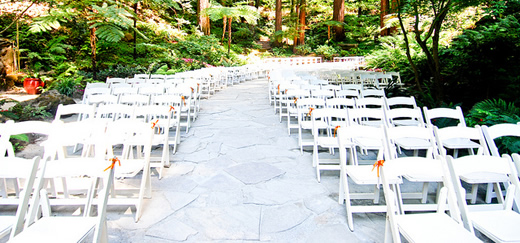Seating at wedding receptions can be downright confusing. Once the ceremony is over, guests will head to the reception to partake in food, toasts and live music. Without a structured and organized seating plan, however, this otherwise joyous event can quickly turn chaotic.
Do I Really Need Assigned Seating?
While there’s no rule stating that you must assign seating at your wedding reception, doing so will make the experience less stressful and more enjoyable — not just for you and your spouse, but for your guests as well. It facilitates the transition from the ceremony to the reception area, guiding guests to the appropriate table. With that said, you don’t have to necessarily assign each guest to a specific seat. Rather, assign each guest to a specific table and give them the freedom to choose their own seat.
Granted, small weddings with fewer than 50 guests can probably suffice without assigned seating. But if you plan on having a traditional wedding with more than 50 guests, you should create a basic layout of who sits where. Doing so creates greater transparency by eliminating the confusing associated with unassigned seating.
Sweetheart vs Head Table
Brides and grooms have one of two different seating options at the reception: they can sit at their own special table, known as a sweetheart table, or they can sit at a long, usually rectangular-shaped table, known as a head table. The sweetheart table offers some perfect photo opportunities, but many couples prefer the fun-filled social aspect of the latter. With a head table, you and your spouse can converse with family and friends who are also seated at the table. The head table is typically set up against a wall, with the bride and groom seated in the middle, the maid of honor seated next to the groom, and the best man seated next to the bride. Of course, you can include other guests at your head table as well, such as your parents and in-laws, close friends, etc.
Alternatively, you can skip both the sweetheart and head table, opting to leave a few seats open at each table instead. This allows you and your newlywed spouse to venture around and mingle with guests at the reception.
Guiding Guests to Their Seats
There are several different ways to guide guests to their seats at the reception, with the most common being a seated chart. Displayed at or near the entrance to the reception, it features a list of guests along with their respective table to which they are assigned. You can still include place cards at the tables to further guide guests to their appropriate table.
Another idea is to use escort cards. Each card contains a guest’s name along with his or her assigned table. Escort cards are typically placed in an envelope on the appropriate table.
Photo credit: Jennifer Yln
